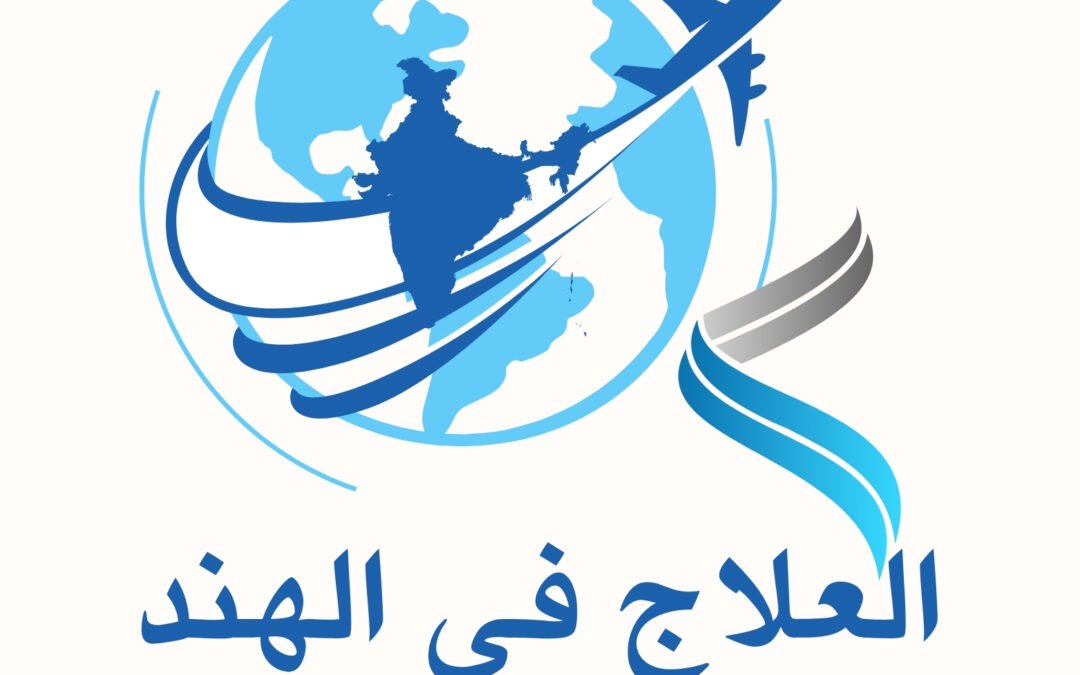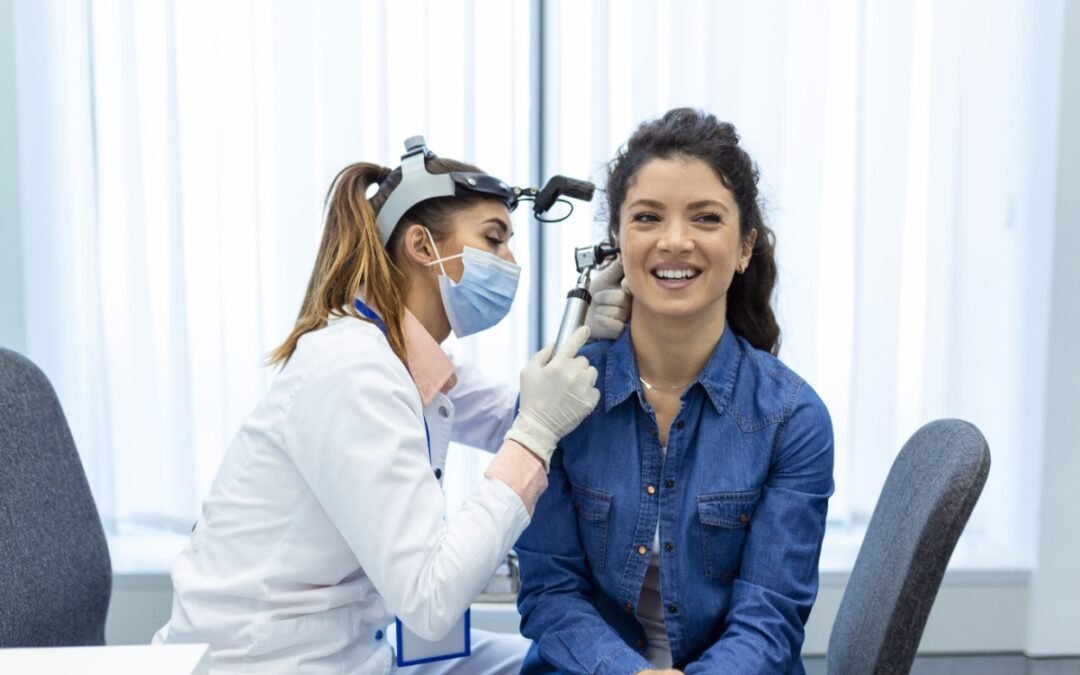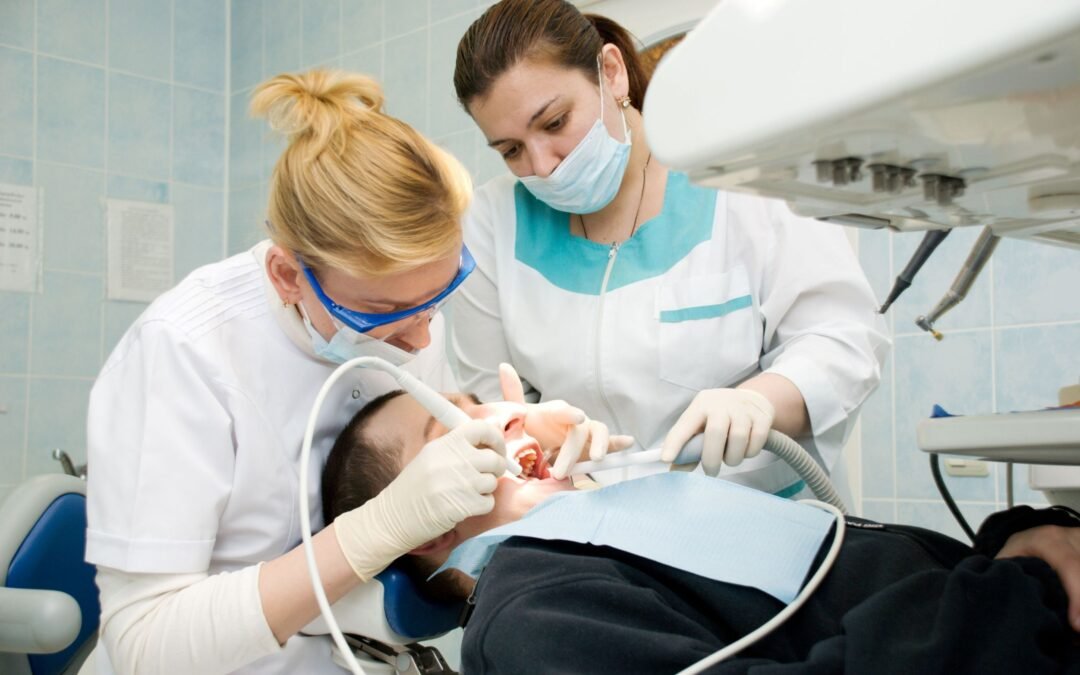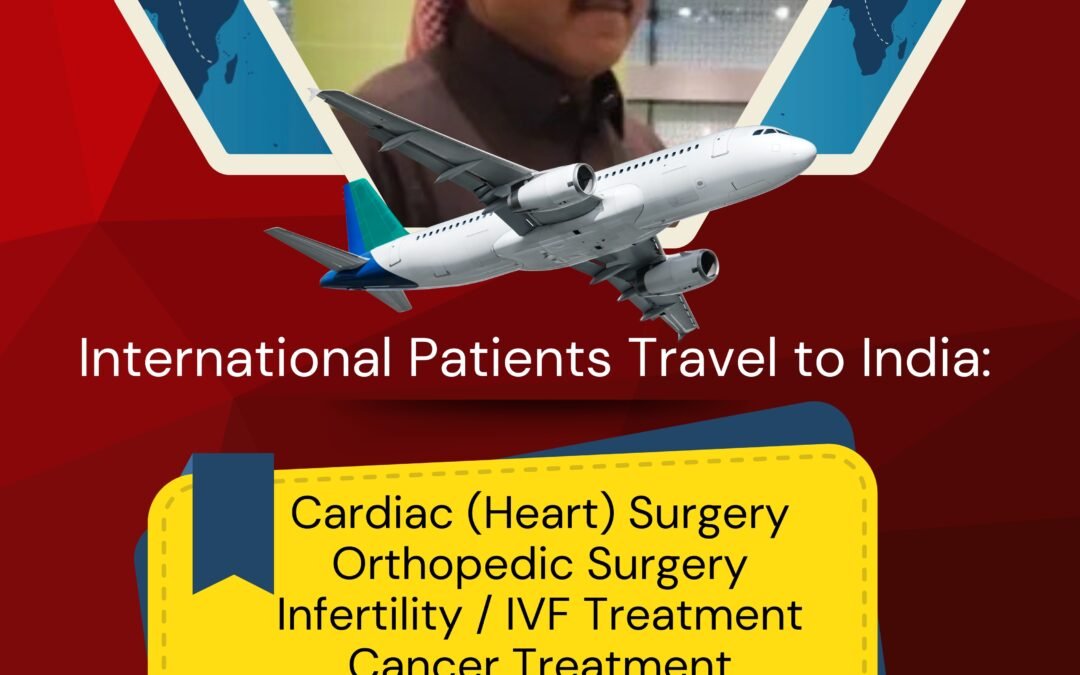
by super | Aug 14, 2025 | Health & Wellness, Hospitals Translator, Medical Tourism Hospitals India, علاج هند, مدونات الأخبار
When it comes to finding the best city for treatment in India, Bangalore (Bengaluru) stands out as the top choice for patients from the Gulf and Arab world. Known for its world-class hospitals, highly qualified doctors, and affordable treatment costs, Bangalore attracts thousands of international patients each year seeking everything from heart surgery to fertility treatment, cosmetic procedures, orthopedics, neurology, and natural therapy in India Bangalore.
Gulf Corner Medical Tourism, managed by Abu Khalid, is dedicated to making the process smooth and stress-free for Arab patients. From arranging hospital consultations to booking premium hotels, providing translators, organizing airport transfers, and guiding families through their entire stay — everything is handled professionally. Many visitors also enjoy exploring Arab Street in Bangalore, where Arabic food, shops, and community gatherings create a home-like environment.
Bangalore’s popularity is also growing among those who want to combine treatment with relaxation. Patients often travel to Kerala after recovery for a wellness retreat, enjoying tourism in Kerala – Almosaferoon Al Arab. This unique blend of medical care and leisure makes India one of the top destinations for medical tourism in Bangalore.
Whether your search is for العلاج في الهند, بنجالور الهند علاج, أفضل مدينة للعلاج في الهند, or medical tourism companies in Bangalore, you’ll find Bangalore offers both advanced healthcare and cultural comfort for Gulf patients. With Gulf Corner Medical Tourism by Abu Khalid, your journey will be planned to perfection, allowing you to focus on what matters most — your health and recovery.
أفضل مدينة للعلاج في الهند, العلاج في كيرلا المسافرون العرب, medical tourism in bangalore, السياحة في الهند المسافرون العرب, medical tourism bangalore, شارع العرب في بنجلور, gulf corner medical tourism, السياحة في كيرلا المسافرون العرب, medical tourism companies in bangalore, السياحة في بنجلور المسافرون العرب, السياحة في الهند للعوائل, بنجلور الهند علاج, العلاج في الهند, بنغالور الهند العلاج, العلاج الطبيعي في الهند بنجلور, العلاج في بنجلور الهند
عند البحث عن أفضل مدينة للعلاج في الهند، تتصدر مدينة بنغالور القائمة كوجهة مفضلة للمرضى القادمين من دول الخليج والدول العربية. تشتهر المدينة بمستشفياتها العالمية، أطبائها ذوي الخبرة العالية، وأسعار العلاج المناسبة، مما يجعلها نقطة جذب للمرضى الذين يبحثون عن علاج لأمراض القلب، العظام، الأعصاب، العقم، الجراحة التجميلية، وحتى العلاج الطبيعي في الهند بنجلور.
تقدم Gulf Corner Medical Tourism بإدارة أبو خالد خدمات متكاملة تشمل التنسيق الطبي، حجز المستشفيات، الإقامة الفندقية، توفير المترجمين، استقبال المطار، وتقديم الدعم الكامل طوال فترة الإقامة. وخلال فترة العلاج، يمكن للمرضى الاستمتاع بزيارة شارع العرب في بنجلور الذي يقدم المأكولات العربية والأسواق والأجواء المألوفة.
كما يختار الكثير من المرضى السفر بعد العلاج إلى كيرلا للاستجمام وقضاء وقت ممتع في الطبيعة، وهو ما يعرف بـ السياحة في كيرلا المسافرون العرب. هذا المزيج من الرعاية الطبية الفاخرة والسياحة المريحة جعل الهند، وخاصة بنجلور، من أفضل الوجهات لـ شركات السياحة الطبية في بنجلور.
سواء كنت تبحث عن العلاج في الهند، أو بنجالور الهند علاج، أو أفضل مدينة للعلاج في الهند، فإن بنجلور توفر لك بيئة علاجية حديثة وخدمات مصممة خصيصًا لاحتياجات المرضى العرب. ومع دعم Gulf Corner Medical Tourism، ستكون رحلتك العلاجية مريحة وآمنة حتى الشفاء التام.
When it comes to medical tourism in Bangalore, international Gulf & Arab patients choose this vibrant city for its world-class hospitals, expert doctors, and affordable costs. For those seeking [SERVICE] in India, Bangalore offers advanced facilities that meet international standards.
Gulf Corner Medical Tourism, led by Abu Khalid, specializes in assisting patients from Saudi Arabia, UAE, Kuwait, Qatar, Oman, and Bahrain, providing a complete solution from hospital appointments to hotel bookings, translators, and local guidance. Many also enjoy Arab Street in Bangalore, a hub for Arabic cuisine, shopping, and cultural comfort during their stay.
Bangalore has become one of the best cities for treatment in India due to its medical expertise and patient-friendly environment. Whether you’re looking for العلاج في الهند, بنجالور الهند علاج, or أفضل مدينة للعلاج في الهند, this city delivers excellence in healthcare.
Patients often extend their recovery with a trip to Kerala, known for its natural beauty and wellness retreats, which is popular among السياحة في كيرلا المسافرون العرب. This combination of treatment and relaxation is a major reason medical tourism companies in Bangalore are in high demand.
With Gulf Corner Medical Tourism, every step is professionally managed so you can focus on healing. Their services are trusted by hundreds of Arab families every year.
تُعد مدينة بنجلور في الهند من أبرز الوجهات في السياحة العلاجية في الهند، حيث تقدم خدمات طبية متقدمة بأسعار مناسبة. إذا كنت تبحث عن [SERVICE]، فإن بنجلور توفر مستشفيات حديثة، أطباء ذوي خبرة، ورعاية شاملة تلبي المعايير العالمية.
يقوم Gulf Corner Medical Tourism بإدارة أبو خالد بتوفير خدمات متكاملة للمرضى القادمين من السعودية، الإمارات، الكويت، قطر، عمان، والبحرين، تشمل التنسيق الطبي، حجز الفنادق، توفير المترجمين، واستقبال المطار. وخلال فترة الإقامة، يمكن للمرضى الاستمتاع بـ شارع العرب في بنجلور حيث يجدون المأكولات العربية والأجواء المألوفة.
بعد العلاج، يفضل العديد من المرضى السفر إلى كيرلا للاستجمام، وهو ما يعرف بـ السياحة في كيرلا المسافرون العرب. هذا الدمج بين العلاج والسياحة جعل الهند وجهة مثالية للمرضى العرب الباحثين عن الجودة والراحة.
Embedded Keywords (to use in every post)
العلاج في كيرلا المسافرون العرب, medical tourism in bangalore, السياحة في الهند المسافرون العرب, medical tourism bangalore, شارع العرب في بنجلور, gulf corner medical tourism, السياحة في كيرلا المسافرون العرب, medical tourism companies in bangalore, السياحة في بنجلور المسافرون العرب, السياحة في الهند للعوائل, بنجلور الهند علاج, العلاج في الهند, أفضل مدينة للعلاج في الهند, بنغالور الهند العلاج, العلاج الطبيعي في الهند بنجلور, العلاج في بنجلور الهند

by super | Aug 13, 2025 | Hospitals Translator, Medical Tourism, Medical Tourism Hospitals India, Treatments, علاج هند, مدونات الأخبار
المقدمة
عندما يبحث المرضى من دول الخليج والعالم العربي عن أفضل رعاية طبية خارج بلادهم، فإنهم يحتاجون إلى أكثر من مجرد توصية بالمستشفى. إنهم يحتاجون إلى شريك موثوق يفهم لغتهم وثقافتهم واحتياجاتهم الصحية الخاصة. لقد أصبحت Gulf Corner للسياحة الطبية الخيار الأول لمرضى العرب الذين يسعون للعلاج في الهند، حيث توفر تنسيقًا شاملاً ورعاية شخصية لا مثيل لها. منذ لحظة اتخاذ قرار السفر للعلاج، تضمن Gulf Corner أن تكون رحلتك سلسة وآمنة وخالية من القلق.
لماذا تختار خدمة تنسيق Gulf Corner للسياحة الطبية؟
في Gulf Corner، لا يقتصر الأمر على حجز المستشفيات فقط، بل هو نظام رعاية متكامل. يعمل فريق التنسيق بشكل مباشر مع أفضل المستشفيات وأشهر الأطباء ومراكز العلاج في جميع أنحاء الهند لتقديم الحل المناسب لكل مريض. يقوم الفريق بتأمين المواعيد المبكرة مع كبار الأطباء، وترتيب التقديرات المالية، والمساعدة في الحصول على التأشيرة، ودعم السفر. الخدمة مصممة خصيصًا لكل مريض لضمان تلقي العلاج المناسب في المكان المناسب دون أي تأخير غير ضروري.
رعاية خاصة لمرضى الخليج والعرب
اللغة وفهم الثقافة لهما تأثير كبير في تجربة العلاج. تقدم Gulf Corner منسقين ناطقين بالعربية بقيادة أبو خالد، الذي يرافق المرضى شخصيًا في كل خطوة من رحلتهم الطبية. من ترجمة الوثائق الطبية إلى المساعدة في النقاشات مع الأطباء، يضمن الفريق وضوح التواصل بين المريض والطبيب. كما يساعدون العائلات أثناء الزيارات للمستشفى، ويوفرون خيارات طعام حلال، ويهتمون بجعل إقامة المريض أكثر راحة وأقل توترًا.
دعم كامل للسفر والعلاج
إلى جانب الترتيبات الطبية، تهتم Gulf Corner بجميع احتياجات السفر — من الاستقبال في المطار، وحجز الفنادق أو الشقق الفندقية بالقرب من المستشفى، وتوفير وسائل النقل للفحوصات، وحتى تنظيم جولات سياحية للمرافقين عند الإمكان. بالنسبة للمرضى من السعودية، الإمارات، قطر، عمان، البحرين، والكويت، يعني هذا وجود نقطة اتصال واحدة لجميع الاحتياجات. هذه الخدمة المتكاملة تتيح للمريض التركيز الكامل على التعافي بينما يتولى فريق Gulf Corner جميع التفاصيل اللوجستية.
شريكك الصحي الموثوق في الهند
سواء كان الأمر يتعلق بجراحة قلب معقدة، أو علاج متقدم للسرطان، أو زراعة أعضاء، أو عمليات أطفال الأنابيب، أو جراحات التجميل، فإن Gulf Corner للسياحة الطبية يربطك بأفضل المستشفيات والأطباء في الهند. يختار المرضى Gulf Corner ليس فقط لشبكتها الطبية القوية، ولكن أيضًا لثقتهم في الخدمة المتميزة، وفهم الثقافة العربية، وضمان رضا المرضى. بسنوات طويلة من الخبرة في التعامل مع المرضى الدوليين، تفخر Gulf Corner بأنها الخدمة رقم واحد في تنسيق السياحة الطبية لمرضى الخليج
Save My vCard Here
Expertise medical treatment list are as follows,
-
Pulmonology Treatment – علاج أمراض الرئة
-
Transplant Treatment – علاج وزراعة الأعضاء
-
ENT Treatment – علاج الأنف والأذن والحنجرة
-
Oral & Maxillofacial Treatment – علاج الفم والفكين
-
Neuro & Brain Treatment – علاج الأعصاب والمخ
-
Spine Treatment – علاج العمود الفقري
-
Cancer Treatment – علاج السرطان
-
Dermatology Treatment – علاج الأمراض الجلدية
-
Gastrology Treatment – علاج أمراض الجهاز الهضمي
-
Fertility Treatment – علاج العقم
-
Weight Loss Treatment – علاج السمنة وفقدان الوزن
-
Psychiatry Treatment – علاج الأمراض النفسية
-
Cosmetic Treatment – العلاج التجميلي
-
Urology Treatment – علاج المسالك البولية
-
Cardiology Treatment – علاج أمراض القلب
-
Pediatric Treatment – علاج الأطفال
-
Gynecology Treatment – علاج أمراض النساء
-
Nephrology Treatment – علاج أمراض الكلى
-
Orthopedics Treatment – علاج العظام والمفاصل
-
Neurology Treatment – علاج الأمراض العصبية
-
Ophthalmology Treatment – علاج العيون
-
Dental Treatment – علاج الأسنان
-
Heart Disease Treatment – علاج أمراض القلب
-
Erectile Dysfunction ED1000 Therapy Treatment – علاج ضعف الانتصاب بتقنية ED1000
-
Occupational Therapy (OT) Treatment – العلاج الوظيفي
-
Surgical Oncology – جراحة الأورام
-
Extracorporeal Shockwave Myocardial Revascularization (ESMR) Treatment – علاج إعادة تروية عضلة القلب بالموجات الصادمة (ESMR)
-
Enhanced External Counterpulsation (EECP) Treatment – علاج النبض الخارجي المحسن (EECP)
-
Ayurveda (Non-Surgical) Treatment – العلاج الأيورفيدي (بدون جراحة)
-
Bariatric Surgery – جراحة السمنة
-
Oncology Treatment – علاج الأورام
-
Ozone Therapy Treatment – علاج الأوزون
-
In Vitro Fertilization (IVF) Treatment – التلقيح الصناعي (أطفال الأنابيب)
-
Erectile Dysfunction (ED) Treatment – علاج ضعف الانتصاب
Top Hospitals in Bangalore, India
1. Manipal Hospitals, Old Airport Road
مانيبل هوسبيتالز – طريق المطار القديم
Multi-specialty with a strong fertility and reproductive medicine wing.
2. Fortis La Femme, Richmond Town
مستشفى فورتيس لا فام – ريتشموند تاون
Exclusive women & fertility hospital with advanced IVF labs.
3. Apollo Fertility, Koramangala
أبولو فيرتيليتي – كورامانغالا
Dedicated IVF and fertility care with high Gulf patient success rates.
4. Cloudnine Fertility, Jayanagar
كلود ناين فيرتيليتي – جايناغار
Specializes in IVF, ICSI, IUI, and high-risk pregnancy care.
5. Sakra World Hospital, Marathahalli
ساكرا وورلد هوسبيتال – ماراتاهالي
Offers Japanese-standard IVF and women’s health services.
6. Aster CMI Hospital, Hebbal
مستشفى أستر سي إم آي – هيبال
International patient-friendly IVF, maternity, and neonatal care.
7. Nova IVF Fertility, Indiranagar
نوفا فيرتيليتي – إنديراناغار
Well-known for personalized IVF plans for GCC couples.
8. Milann Fertility Center, Kumara Park
ميلان فيرتيليتي – كومارا بارك
Award-winning fertility institute with Arabic patient assistance.
9. GarbhaGudi IVF Center, Hanumanthnagar
مركز غربه غودي للخصوبة – هانومانثناغار
Specializes in IVF, egg freezing, and donor programs.
10. BGS Gleneagles Global Hospital, Kengeri
مستشفى بي جي إس غلين إيغلز غلوبال – كينغري
Advanced fertility unit along with multi-organ transplant services.
Our Communication Address
📍 Gulf Corner Medical Tourism – Bangalore, India | الجلف كورنر للسياحة الطبية – بنجلور، الهند
Address / العنوان:
#24, Coles Road, Frazer Town, Bangalore – 560005, Karnataka, India
Phone Numbers / أرقام الهاتف:
+919845829921 | +918884500066
Email / البريد الإلكتروني: gulfcornermedicaltourism@gmail.com
Website / الموقع الإلكتروني: www.gulfcornermedicaltourism.com
Contact Person / الشخص المسؤول: Abu Khalid – Senior Medical Coordinator
أبو خالد – منسق طبي أول
Pulmonology Treatment : Pulmonology treatment in India, affordable pulmonology India, best pulmonology hospital in Bangalore, pulmonology for Gulf patients in India, pulmonology for Arab patients in India, lung disease treatment in Bangalore, COPD treatment India, asthma treatment India, pulmonology Bangalore cost, best lung specialists in India, pulmonology packages for GCC patients, pulmonology for international patients Bangalore, Arabic pulmonology coordinator India, Gulf Corner Medical Tourism pulmonology, pulmonology with Abu Khalid Bangalore, pulmonology clinics near Arab Street Bangalore, best pulmonology for Saudi patients India, best pulmonology for UAE patients India, best pulmonology for Qatar patients India, best pulmonology for Oman patients India, best pulmonology for Bahrain patients India, pulmonology India reviews.
Transplant Treatment : Transplant treatment in India, organ transplant India, kidney transplant Bangalore, liver transplant India, affordable transplant India, best transplant hospital Bangalore, transplant for Gulf patients India, transplant for Arab patients India, transplant Bangalore cost, best transplant surgeons in India, transplant packages for GCC patients, transplant success rate India, transplant for international patients Bangalore, Arabic transplant coordinator India, Gulf Corner Medical Tourism transplant, transplant with Abu Khalid Bangalore, transplant clinics near Arab Street Bangalore, best transplant for Saudi patients India, best transplant for UAE patients India, best transplant for Qatar patients India, best transplant for Oman patients India, best transplant for Bahrain patients India, transplant India reviews.
ENT Treatment : ENT treatment in India, affordable ENT India, best ENT hospital in Bangalore, ENT for Gulf patients India, ENT for Arab patients India, ear nose throat treatment Bangalore, sinus surgery India, tonsil surgery India, ENT Bangalore cost, best ENT specialists in India, ENT packages for GCC patients, ENT for international patients Bangalore, Arabic ENT coordinator India, Gulf Corner Medical Tourism ENT, ENT with Abu Khalid Bangalore, ENT clinics near Arab Street Bangalore, best ENT for Saudi patients India, best ENT for UAE patients India, best ENT for Qatar patients India, best ENT for Oman patients India, best ENT for Bahrain patients India, ENT India reviews.
Oral & Maxillofacial Treatment : Oral & maxillofacial treatment in India, affordable jaw surgery India, best maxillofacial hospital in Bangalore, jaw reconstruction India, cleft lip surgery India, oral maxillofacial for Gulf patients India, oral maxillofacial for Arab patients India, oral surgery Bangalore cost, best maxillofacial surgeons in India, maxillofacial packages for GCC patients, oral maxillofacial for international patients Bangalore, Arabic oral surgery coordinator India, Gulf Corner Medical Tourism oral maxillofacial, oral maxillofacial with Abu Khalid Bangalore, oral surgery clinics near Arab Street Bangalore, best oral surgery for Saudi patients India, best oral surgery for UAE patients India, best oral surgery for Qatar patients India, best oral surgery for Oman patients India, best oral surgery for Bahrain patients India, oral surgery India reviews.
IVF & Fertility Treatment : IVF treatment in India, affordable IVF India, IVF success rate India, best IVF hospital in Bangalore, IVF for Gulf patients in India, IVF for Arab patients in India, fertility treatment in Bangalore, ICSI treatment India, IUI treatment India, egg freezing in India, IVF Bangalore cost, best fertility doctors in India, IVF packages for GCC patients, IVF success stories India, IVF for international patients Bangalore, Arabic IVF coordinator India, Gulf Corner Medical Tourism IVF, IVF with Abu Khalid Bangalore, IVF clinics near Arab Street Bangalore, fertility tourism India, best IVF for Saudi patients India, best IVF for UAE patients India, best IVF for Qatar patients India, best IVF for Oman patients India, best IVF for Bahrain patients India, IVF Bangalore success rate, IVF India reviews, IVF in Bangalore for foreigners.
Pulmonology Treatment : Pulmonology treatment in India, affordable pulmonology India, best pulmonology hospital in Bangalore, pulmonology for Gulf patients in India, pulmonology for Arab patients in India, lung disease treatment in Bangalore, COPD treatment India, asthma treatment India, pulmonology Bangalore cost, best lung specialists in India, pulmonology packages for GCC patients, pulmonology for international patients Bangalore, Arabic pulmonology coordinator India, Gulf Corner Medical Tourism pulmonology, pulmonology with Abu Khalid Bangalore, pulmonology clinics near Arab Street Bangalore, best pulmonology for Saudi patients India, best pulmonology for UAE patients India, best pulmonology for Qatar patients India, best pulmonology for Oman patients India, best pulmonology for Bahrain patients India, pulmonology India reviews.
Transplant Treatment : Transplant treatment in India, organ transplant India, kidney transplant Bangalore, liver transplant India, affordable transplant India, best transplant hospital Bangalore, transplant for Gulf patients India, transplant for Arab patients India, transplant Bangalore cost, best transplant surgeons in India, transplant packages for GCC patients, transplant success rate India, transplant for international patients Bangalore, Arabic transplant coordinator India, Gulf Corner Medical Tourism transplant, transplant with Abu Khalid Bangalore, transplant clinics near Arab Street Bangalore, best transplant for Saudi patients India, best transplant for UAE patients India, best transplant for Qatar patients India, best transplant for Oman patients India, best transplant for Bahrain patients India, transplant India reviews.
ENT Treatment : ENT treatment in India, affordable ENT India, best ENT hospital in Bangalore, ENT for Gulf patients India, ENT for Arab patients India, ear nose throat treatment Bangalore, sinus surgery India, tonsil surgery India, ENT Bangalore cost, best ENT specialists in India, ENT packages for GCC patients, ENT for international patients Bangalore, Arabic ENT coordinator India, Gulf Corner Medical Tourism ENT, ENT with Abu Khalid Bangalore, ENT clinics near Arab Street Bangalore, best ENT for Saudi patients India, best ENT for UAE patients India, best ENT for Qatar patients India, best ENT for Oman patients India, best ENT for Bahrain patients India, ENT India reviews.
Oral & Maxillofacial Treatment : Oral and maxillofacial treatment in India, affordable jaw surgery India, best maxillofacial hospital in Bangalore, jaw reconstruction India, cleft lip surgery India, oral maxillofacial for Gulf patients India, oral maxillofacial for Arab patients India, oral surgery Bangalore cost, best maxillofacial surgeons in India, maxillofacial packages for GCC patients, oral maxillofacial for international patients Bangalore, Arabic oral surgery coordinator India, Gulf Corner Medical Tourism oral maxillofacial, oral maxillofacial with Abu Khalid Bangalore, oral surgery clinics near Arab Street Bangalore, best oral surgery for Saudi patients India, best oral surgery for UAE patients India, best oral surgery for Qatar patients India, best oral surgery for Oman patients India, best oral surgery for Bahrain patients India, oral surgery India reviews.
Neuro Treatment : Neurology treatment in India, affordable neuro treatment India, best neurology hospital in Bangalore, neurology for Gulf patients India, neurology for Arab patients India, brain surgery Bangalore, stroke treatment India, epilepsy treatment India, neuro Bangalore cost, best neurologists in India, neurology packages for GCC patients, neurology for international patients Bangalore, Arabic neurology coordinator India, Gulf Corner Medical Tourism neurology, neurology with Abu Khalid Bangalore, neurology clinics near Arab Street Bangalore, best neurology for Saudi patients India, best neurology for UAE patients India, best neurology for Qatar patients India, best neurology for Oman patients India, best neurology for Bahrain patients India, neurology India reviews.
Spine Treatment : Spine treatment in India, affordable spine surgery India, best spine hospital in Bangalore, spine surgery for Gulf patients India, spine surgery for Arab patients India, back pain surgery Bangalore, scoliosis treatment India, disc replacement India, spine Bangalore cost, best spine surgeons in India, spine packages for GCC patients, spine treatment for international patients Bangalore, Arabic spine coordinator India, Gulf Corner Medical Tourism spine, spine surgery with Abu Khalid Bangalore, spine clinics near Arab Street Bangalore, best spine surgery for Saudi patients India, best spine surgery for UAE patients India, best spine surgery for Qatar patients India, best spine surgery for Oman patients India, best spine surgery for Bahrain patients India, spine India reviews.
Cancer Treatment : Cancer treatment in India, affordable cancer treatment India, best cancer hospital in Bangalore, oncology for Gulf patients India, oncology for Arab patients India, chemotherapy in India, radiation therapy India, cancer surgery Bangalore, cancer Bangalore cost, best oncologists in India, cancer packages for GCC patients, cancer treatment for international patients Bangalore, Arabic oncology coordinator India, Gulf Corner Medical Tourism cancer, cancer treatment with Abu Khalid Bangalore, cancer clinics near Arab Street Bangalore, best cancer treatment for Saudi patients India, best cancer treatment for UAE patients India, best cancer treatment for Qatar patients India, best cancer treatment for Oman patients India, best cancer treatment for Bahrain patients India, cancer India reviews.
Pulmonology Treatment : Pulmonology treatment in India, best pulmonology hospital in Bangalore, lung disease treatment India, asthma treatment India for Gulf patients, COPD treatment India, pulmonary rehabilitation Bangalore, pulmonology specialist for Arab patients in India, affordable pulmonology care India, lung transplant India for foreigners, pulmonology tourism India, Arabic-speaking pulmonologist Bangalore, best pulmonology for Saudi patients India, best pulmonology for UAE patients India, best pulmonology for Qatar patients India, best pulmonology for Oman patients India, best pulmonology for Bahrain patients India, Gulf Corner Medical Tourism pulmonology, pulmonology care with Abu Khalid Bangalore, chest disease treatment India, bronchitis treatment India for GCC patients.
Transplant Treatment : Organ transplant in India, kidney transplant India success rate, liver transplant India cost for foreigners, heart transplant India for Arab patients, bone marrow transplant India, organ transplant packages India, transplant tourism India, affordable organ transplant in Bangalore, best transplant hospital in Bangalore, transplant for GCC patients India, Arabic-speaking transplant coordinator India, transplant care with Abu Khalid Bangalore, Gulf Corner Medical Tourism transplant services, best transplant for Saudi patients India, best transplant for UAE patients India, best transplant for Qatar patients India, best transplant for Oman patients India, best transplant for Bahrain patients India, transplant recovery India, transplant success stories India.
ENT Treatment : ENT treatment in India, best ENT hospital in Bangalore, ear surgery India for Gulf patients, nose surgery India cost, throat treatment India for Arab patients, sinus surgery India, cochlear implant India, ENT specialist Bangalore for foreigners, affordable ENT treatment India, ENT for GCC patients India, Arabic-speaking ENT doctor Bangalore, Gulf Corner Medical Tourism ENT, ENT care with Abu Khalid Bangalore, best ENT for Saudi patients India, best ENT for UAE patients India, best ENT for Qatar patients India, best ENT for Oman patients India, best ENT for Bahrain patients India, ENT surgery packages India, hearing loss treatment India for Arab patients.
Oral & Maxillofacial Treatment : Oral surgery India, maxillofacial surgery India for Gulf patients, jaw surgery India cost, dental implants India for foreigners, cleft palate surgery India, oral cancer surgery Bangalore, best oral & maxillofacial surgeon India, affordable oral surgery India, Arabic-speaking oral surgeon Bangalore, Gulf Corner Medical Tourism oral surgery, oral surgery with Abu Khalid Bangalore, oral maxillofacial for GCC patients India, best oral surgery for Saudi patients India, best oral surgery for UAE patients India, best oral surgery for Qatar patients India, best oral surgery for Oman patients India, best oral surgery for Bahrain patients India, facial trauma surgery India, jaw reconstruction India for Arab patients.
Neuro & Brain Treatment : Neurology treatment in India, brain surgery India cost, stroke treatment India for Gulf patients, epilepsy treatment India, Parkinson’s disease treatment India, brain tumor surgery Bangalore, affordable neuro care India, Arabic-speaking neurologist Bangalore, neuro rehabilitation India, Gulf Corner Medical Tourism neurology, neurology care with Abu Khalid Bangalore, best neurology for Saudi patients India, best neurology for UAE patients India, best neurology for Qatar patients India, best neurology for Oman patients India, best neurology for Bahrain patients India, neuro surgery packages India, spine and brain treatment India for GCC patients, multiple sclerosis treatment India, migraine treatment India for foreigners.
Spine Treatment : Spine surgery in India, minimally invasive spine surgery India, spine fusion surgery India cost, scoliosis treatment India for Gulf patients, slipped disc surgery India, spine specialist Bangalore for foreigners, affordable spine surgery India, Arabic-speaking spine surgeon Bangalore, Gulf Corner Medical Tourism spine, spine care with Abu Khalid Bangalore, spine surgery for GCC patients India, best spine surgery for Saudi patients India, best spine surgery for UAE patients India, best spine surgery for Qatar patients India, best spine surgery for Oman patients India, best spine surgery for Bahrain patients India, spinal cord injury treatment India, back pain surgery India for Arab patients, spine rehabilitation India.
Cancer Treatment : Cancer treatment in India, top cancer hospital in Bangalore, chemotherapy India for Gulf patients, radiation therapy India, breast cancer surgery India, prostate cancer treatment India for Arab patients, leukemia treatment India, bone marrow transplant India, affordable cancer care India, Arabic-speaking oncologist Bangalore, Gulf Corner Medical Tourism oncology, cancer care with Abu Khalid Bangalore, cancer treatment for GCC patients India, best cancer hospital for Saudi patients India, best cancer hospital for UAE patients India, best cancer hospital for Qatar patients India, best cancer hospital for Oman patients India, best cancer hospital for Bahrain patients India, cancer surgery India cost, cancer recovery stories India.
والعرب في الهند.






